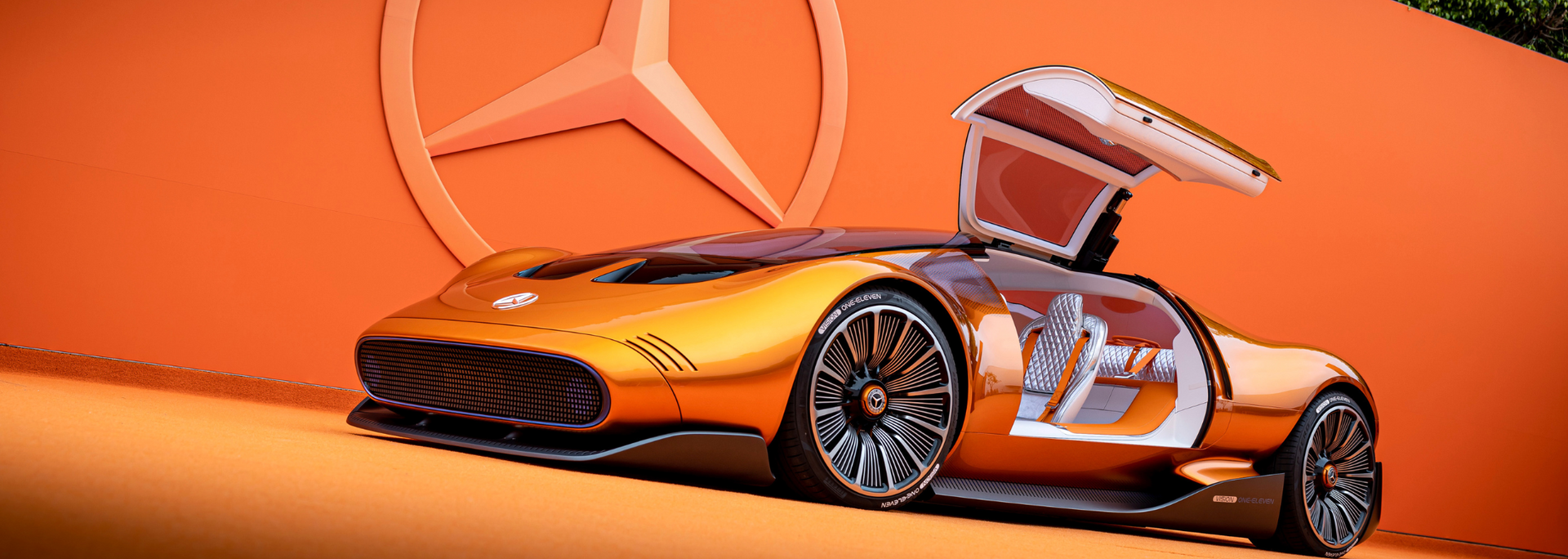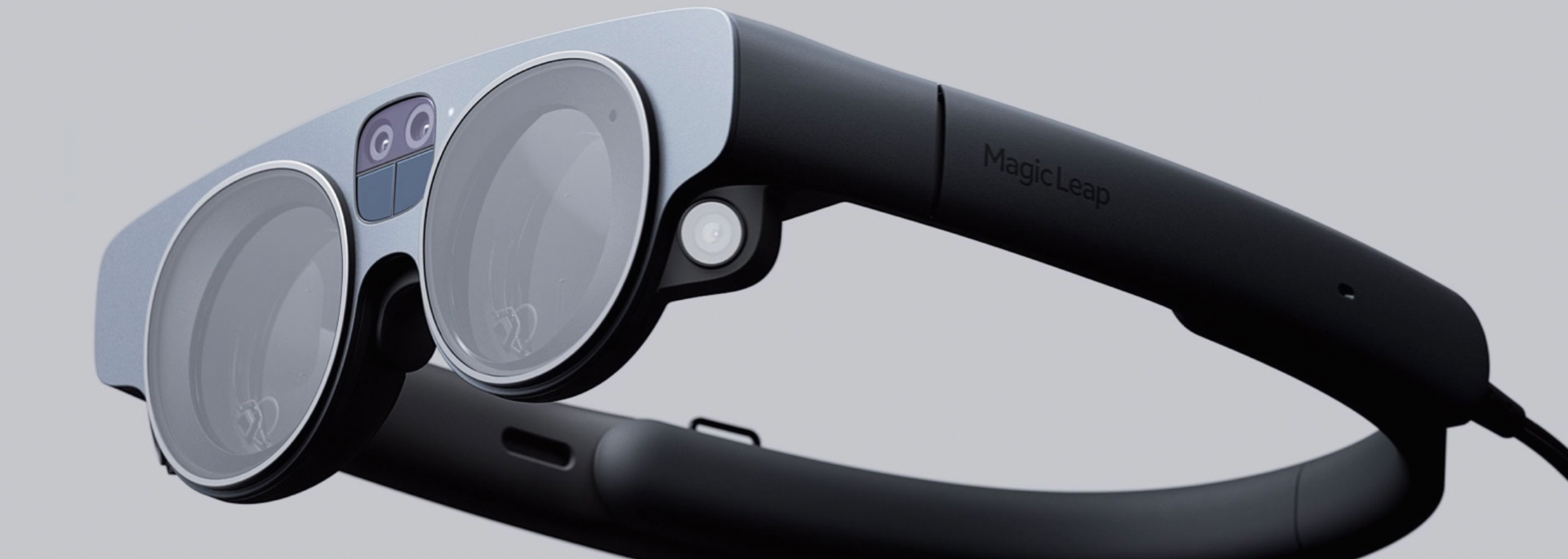hello@simplyvideo.io
How enterprises are using Magic Leap 2 right now
Magic Leap 2 is an AR headset that can be harnessed in the automotive industry, healthcare and more. Learn how it's being used by companies right now.

Magic Leap 2 is an industry-leading AR headset that's currently being deployed in manufacturing, defence and medicine – among other verticals. Magic Leap information centre
Like the original Magic Leap headset, it has super-clear visuals – but the new version has a wider, taller field of vision and "dynamic dimming" capabilities that mean users can bring objects in and out of focus with greater ease.
With industrial applications in mind, the designers made it lightweight and portable. Users simply put on the headset, hold a controller and wear a processor pack at their side. This makes it easy for companies to integrate the device into their everyday workflows.
And finally, it has spatial audio. This means that if you're taking part in an AR-enhanced video meeting, you can hear participants' voices as though they were there in the room with you.
With its improved functionality and versatility, it's no wonder that Magic Leap 2 is being used in settings as diverse as the operating theatre and the driver's seat.
"Oh lord, won't you buy me an AR-enhanced Mercedes-Benz?" – Janis Joplin (maybe)
Mercedes-Benz has always been a company built on innovation – and the story of the C111 car is a case in point.
Back in the 1960s and 1970s, MB was experimenting with the latest in engine technology. The C111 model was its testbed series.
But the C111 wasn't just big news for engine technicians. It was also sleek, stylish and futuristic, boasting then-cutting-edge features like gull-wing doors and leather trim interiors.
Half a century later, Mercedes-Benz is developing a concept car called Vision One-Eleven, which takes the C111 as its inspiration.

Its 2023 iteration is a vision of how cars might look in 2043. While it shares its 1970s-style orange bodywork and gull-wing doors with the C111, its electric engine and AR compatibility look to the future.
Take its pixellated dashboard – a true mash-up of old and new. Its 80s-style low-pixel look harks back to the early days of video games, while its ticker-tape display takes you back to pre-internet news programmes.
But this is a car from 2043, so its pixellated display is mirrored in crisp hi-res on the multi-media screen.
And if you pop on a Magic Leap 2, the dashboard takes on 3D proportions – a spatial user interface that puts the Vision One-Eleven squarely on the cutting edge.
AR technology on the road is relatively uncharted territory with a lot of potential.
Drivers know only too well the challenges of absorbing directions while staying alert. AR headsets and smart glasses can present GPS as a floating display – one that is in the driver's field of vision without getting in the way.
The result? The driver has less cognitive load to deal with – no more flitting between a dashboard-mounted phone and the road ahead. Instead, they can stay focused and alert at all times.
But as exciting as this is, Magic Leap can do so much more.
Surgery
Magic Leap 2 isn't just being used in futuristic cars and industrial settings. It's also part of the digital transformation of healthcare, in which smart glasses and headsets can save lives.
In January 2023, Magic Leap announced that its device had earned IEC 60601-1 – essentially, the technical standards needed to ensure the safety of electrical medical equipment.

Certification achieved, Magic Leap 2 is ready for the operating theatre and other clinical settings.
You might be wondering what place an XR headset has in the operating theatre. Surely surgeons are already able to carry out surgery safely and efficiently?
Well, yes – but there's always room for improvement. How, for example, can XR help to improve surgeon focus?
At the moment, most surgeons split their attention between the patient and the data they need on a 2D screen. However safe the process, this can create distractions that need ironing out.
The Magic Leap 2 enables surgeons to see visualisations of clinical data and images. They float before the surgeon's field of vision in such a way that they can look at both the patient and the data they need.
Magic Leap partner SentiAR provides one such solution. It aims to improve surgeon focus during cardiac catheterisation.
This is where a catheter is inserted into a blood vessel in the patient's groin or arm. The catheter's tip is passed up to the heart and coronary arteries, guided by X-ray images.
This process can be invaluable when diagnosing heart conditions, as well as planning future treatments. But at present, there's a catch – the practitioner has to shift their focus back and forth between the patient and the 2D screen as they pass the catheter through the patient's blood vessels.
With SentiAR and Magic Leap 2, the practitioner can see a 3D map of the patient's heart and the location of the catheter in real time.
This is just one example of how devices like Magic Leap 2 are making healthcare safer and more innovative.
In other news…
They say that "no man is an island". This increasingly applies to tech. We're transitioning from the age of lone geniuses to an ecosystem of developers, startups and solutions.
One thing that makes this possible is OpenXR – and, as of April 2023, Magic Leap 2 offers native support for it.
OpenXR provides an API with a noble aim: to simplify app development and deployment.
For the developer, this means apps will work painlessly with any compatible device, reducing friction between software and hardware.
And for the customer, it means that more and more apps are accessible – and that you're able to avoid vendor lock-in.
By offering native support for OpenXR, Magic Leap 2 is ensuring it will be compatible with as many new innovative apps as possible, as and when they're rolled out.
Interested in trying out some of the latest in
XR technology? Go to our
online store and click "Try before you buy" for a free expert demonstration.

Contact Us
Connect global teams. Collaborate with remote experts. Streamline processes and unlock cost savings with industry-ready extended reality technology.
Contact Info
hello@expandreality.io
Gemini Business Park
Sheepscar Way
Leeds
LS7 3JB
All Rights Reserved | Expand Reality







